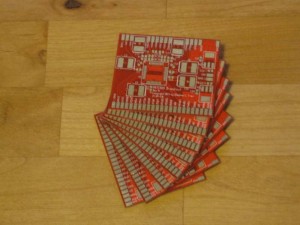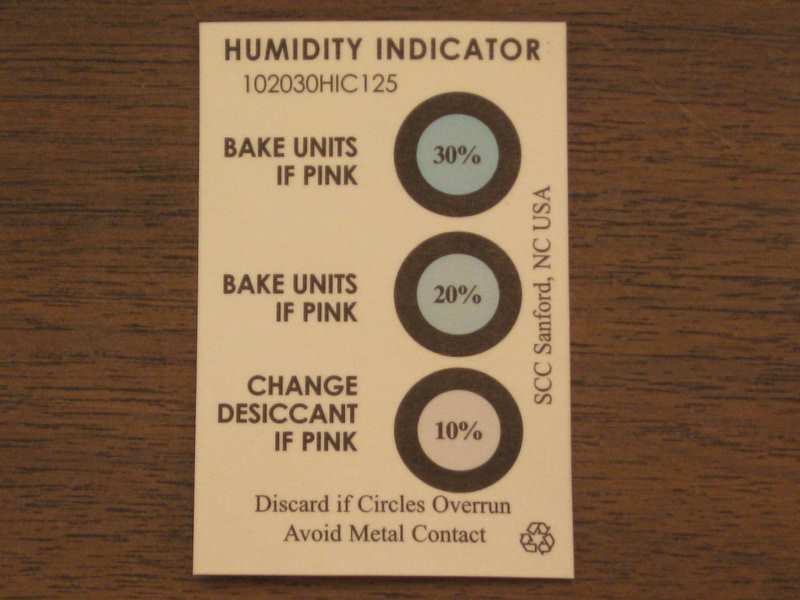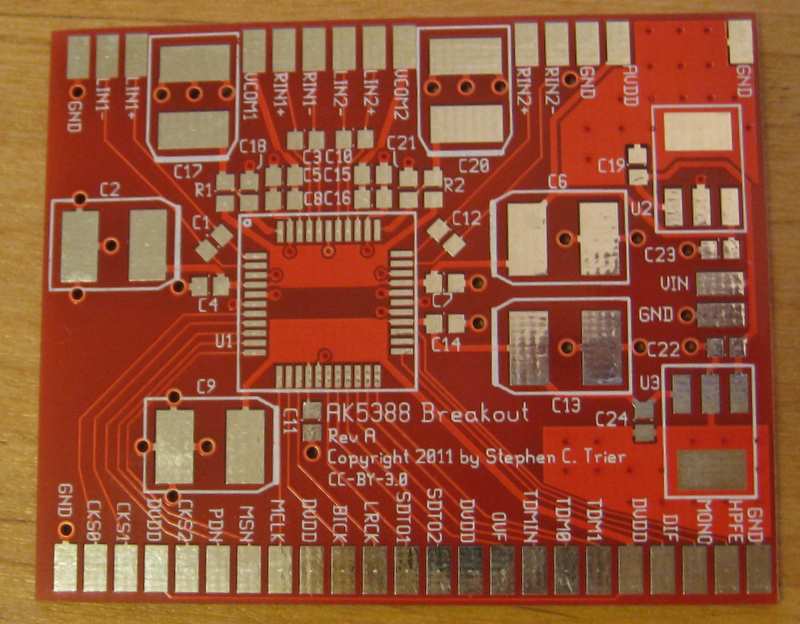 “Honey, the package you’ve been waiting for from Hong Kong is by your computer,” said my dear wife shortly after I got home from work on Friday. Even better, a few minutes later she suggested that I spend the evening in the basement, building up one of my new boards. I have a wonderful wife!
“Honey, the package you’ve been waiting for from Hong Kong is by your computer,” said my dear wife shortly after I got home from work on Friday. Even better, a few minutes later she suggested that I spend the evening in the basement, building up one of my new boards. I have a wonderful wife!
The AK5388 ADC breakout boards finally arrived! I had a hard time waiting for them. First, Itead Studio didn’t ask me to correct the design until the day the finished boards were supposedly going to ship. (They did apologize for the delay — it sounded like there was a communications snafu between them and the fab.) Then I waited five more days for the board to be fabbed. Shipping from Hong Kong to Ohio took ten days. Looking around on the web, I’ve seen shipping times reported from seven to ten days, sometimes going up to as much as 20 days during the holiday season.
All eight boards look great. Other people who tried Itead reported some over-etching and silkscreen problems, but I don’t see any defects on mine. Since Itead now does 100% electrical testing, I have confidence that the boards will all work. I could spot the tiny dimple in each pad where the flying probes touched down, so it is clear that all eight boards were tested.
I went to the basement and heated up the soldering iron. The board went together easily. The 0.80 mm pitch of the AK5388 was downright easy to solder after the 0.50 mm A3PN250 FPGA and other fine-pitch parts I’ve been using at work. Besides, I’ve learned some new soldering techniques lately that helped me solder the AK5388 quickly, but I’ll have to share those in another post. I did use a meter to check all of my AK5388 solder joints, though. There were a few bridges, but they cleaned up without a problem.
The pads for the big electrolytic capacitors are larger than necessary. I used PCB’s default EIA7343 footprint. The pads had plenty of room for the soldering iron, but they could have been smaller without sacrificing ease of assembly. (Did I use the wrong footprint once again? 0805 capacitors seem to be the only ones I get along with…)

Lately Digi-Key has been taking much stronger steps to control moisture uptake by the semiconductors they sell. Instead of just shipping some cut tape in an anti-static baggie, they now seal the chips in an airtight bag with a packet of dessicant and a humidity indicator. I opened the bag this one was in about 4 weeks ago. Not bad so far, considering it was in my not-very-dry basement that whole time. Moisture uptake is important for reflow soldering techniques, but as far as I can tell, it is less significant for hand-soldering.

Now I’m left asking myself what comes next. In my original plan, the next step was to couple the ADC to the FPGA, put a USB core on the FPGA, and build a sound card. Once that works, adding a local oscillator and a quadrature mixer will make everything I need for a PC-based software-defined-radio (SDR) receiver, and this long trek will finally result in a radio.
However, I hear that the bands are great these days, and I’m not sure I want to take the time to homebrew an SDR rig just to get on the air. Maybe I should spend some time on a faster route to a radio, then come back to the SDR. I’ll probably have more on that idea next week.
Until then, keep on tinkering, and as always, your comments are welcome!

Hi, Stephen.
Your work is really nice and your explanations are so precise.
Can you tell me how much it costs the manufacture of this boards and what it is you pcb supplier.
Thanks.
Hi, Diego!
Thanks for the kind words! I have used several PCB suppliers. The boards you see here were done at iTead Studios. The price for this board was US $23 for 8 boards in their 5 cm x 10 cm size. iTead’s pricing starts at US $10 for 5 cm x 5 cm boards in green.
Stephen
Thanks for the information. I think that they offer a good and cheap service.